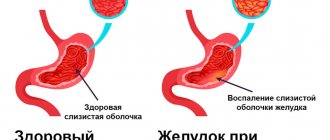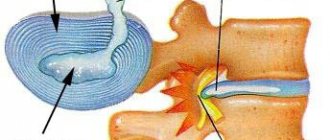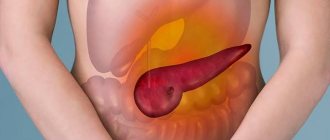Types of headaches
The International Headache Society proposes to distinguish the following types of headaches:
- Primary headaches, when it is not possible to identify the organic cause of pain - they account for 95–98% of headache cases
- Secondary headaches associated with organic lesions of the brain or other organs
- Cranial (cranial) neuralgia, central and primary facial pain, as well as other headaches
The most common types of headaches encountered in practice are:
- Migraine
- Tension headache (TTH)
- Cluster headache (PHB)
- Overuse headache (medication overuse headache, AHA)
Migraine is an episodic form of primary headache, which manifests itself as intense paroxysmal, often unilateral, headaches, in combination with various neurological, autonomic, and gastrointestinal manifestations. Migraine pain is severe, throbbing and pressing in nature, usually spreading to half of the head. Before an attack, there may be warning signs such as weakness, difficulty concentrating, and increased sensitivity to sound, light, and smells. During the attack itself, these manifestations may be accompanied by nausea, vomiting, dizziness, fainting, increased heart rate, suffocation and other vegetative symptoms. There are also manifestations attributed to migraine aura - patients see flashes, flies, flickering or luminous objects, note unilateral loss of the visual field, unilateral weakness in the limbs, transient speech disorders.
Tension headache from the group of primary headaches manifests itself as a bilateral headache of a compressive or pressing nature of mild or moderate intensity, lasting from several minutes to several days. The pain spreads over the head in the form of a “hoop” and is rarely accompanied by nausea, sensitivity to light or sound. Often headaches are accompanied by pain in the back of the head, neck and shoulders.
Cluster headache is a form of primary headache with attacks of very intense, strictly unilateral pain in the temporal region, around the eye, or mixed localization. The duration of attacks is from 15 minutes to 3 hours, attacks are repeated every 2 days or more often and are grouped in series in time (“clusters” or “bundles”). In this case, on the pain side, symptoms such as lacrimation, redness of the eye, nasal congestion and rhinorrhea, sweating of the forehead and face, drooping eyelid, and constriction of the pupil appear. The pain is very pronounced, sometimes unbearable so much that motor restlessness, aggression occur, and suicide attempts have been described.
Drug-induced, or abuse, headache from the group of secondary headaches is of a bilateral pressing nature and has insignificant or moderate intensity. An important criterion: it lasts more than 15 days per month in a patient who has been taking medications for more than 3 months (at least two weeks each month). Potentially dangerous drugs for headaches from excessive drug use include analgesics, NSAIDs and their combinations, triptans, ergotamine derivatives, opioids - those drugs that are used to treat other types of headache. Taking medications that are already effective against abusive headaches provides incomplete relief and forces you to continue taking them.
Headaches due to diseases of the gastrointestinal tract
Headaches due to diseases of the gastrointestinal tract
Complaints of headache (cephalalgia) do not have a direct or independent meaning in diseases of the gastrointestinal tract (GIT), but they reflect the seriousness of the problem as a whole.
It is extremely important to carry out a differential diagnosis of the causes of this pain. At the Expert clinic, not only gastroenterologists, but cardiologists and neurologists work on solving such problems.
What are the main causes of the combination of gastrointestinal diseases and headaches?
- The phenomena of functional disorders (gastric dyspepsia) can begin in childhood with irregular and unhealthy diet. In the case of a long period of fasting or dry food, a headache may subsequently occur as a signal from the body that the necessary substances and fluids are not being replenished.
- Gastrointestinal diseases, accompanied by pain and frequent bowel movements at night, can disrupt the physiological rhythm of sleep, which can lead to overwork, lack of adequate rest and, as a result, headaches.
- On the other hand, with prolonged diarrhea, dehydration develops with loss of blood electrolytes, which can also lead to headaches due to disruption of systemic balance - homeostasis.
- The presence of persistent constipation leads to intoxication, just like any food poisoning, which is manifested by a headache.
- Repeated vomiting with intestinal dyspepsia or pancreatitis can, by increasing intra-abdominal pressure, lead to an increase in systemic blood pressure, causing headaches.
- Severe gastrointestinal diseases, characterized by severe inflammation of various natures (viral, bacterial, autoimmune, parasitic) can also give systemic manifestations, including headache, as an indicator of intoxication.
Parallel existing conditions – comorbidity – cannot be excluded. When one patient has several directly unrelated diseases (gastrointestinal pathology, cardiovascular and neurological diseases). Only a thorough collection of complaints, anamnesis and an objective examination can help to place the correct emphasis and prescribe the correct treatment: eliminate intoxication (a state of poisoning), treat the underlying disease that led to it, and also exclude or confirm different groups of vascular diseases, both arteries and veins, pathologies of the spine, which can cause persistent headaches.
The first table excludes
Thus, it is important for the pharmacist to exclude hypertension, which requires mandatory consultation with a doctor. To do this, you need to ask a few questions.
- Questions about the nature of GB:
- What is the intensity of headache, its nature and localization?
- Are there any accompanying symptoms?
- What causes headache attacks?
- Questions about HD treatment:
- What medications for migraines and headaches has the patient already used or is currently using?
- With what effect?
- Presence of warning symptoms requiring mandatory medical attention:
- Intense headache with a sudden (“explosive”) onset can develop with subarachnoid hemorrhage.
- Headache with an atypical aura lasting more than an hour or motor weakness is characteristic of a cerebrovascular accident - transient ischemic attack or stroke, as well as the presence of an aura without headache, although there was previously migraine with aura.
- An aura that first appears in a patient taking combined oral contraceptives may indicate a risk of stroke.
- Increasing headache that gets worse over several weeks or more, or headache that gets worse with changes in posture, coughing, sneezing, or straining, may indicate the presence of a space-occupying intracranial formation.
- Also requires consultation with a neurologist in headaches accompanied by focal neurological symptoms (shaky gait, unilateral and bilateral paralysis, etc.), and headaches with fever of unknown origin.
- A previous fall or head injury is a reason to see a doctor to rule out a TBI.
The presence of an intense headache, spreading to half of the head, accompanied by nausea, vomiting, sensitivity to light and sound, or a typical aura, may indicate a migraine. Severe (even unbearable) unilateral pain in the temple, orbit, or mixed localization, accompanied by a feeling of anxiety and/or autonomic symptoms on the side of pain, indicates the presence of cluster headache. In both cases, the pain syndrome is poorly controlled by conventional analgesics and requires the prescription of specific therapy by a doctor. Headache accompanied by severe pain in the eyes and blurred vision requires exclusion of glaucoma.
Long-term previous use of analgesics allows one to suspect the development of excessive hypertension, which also requires consultation with a neurologist.
Gastritis, headaches, nausea
Alexander
3842 views
June 1, 2020
Good evening, a few days ago I had an FGD and the result was as follows: Conclusion: Reflux esophagitis, superficial erosive gastritis with hyperplastic erosions up to 0.2 cm, in the antrum, contains about 40 ml of mucus and bile. Cardia insufficiency, Duodeno-gastric reflux. Biopsy test for Helicobacter - positive +++. Result of UAC - UAC results: ESR- 4, norm 0-15 Red blood cells - 5.5 norm up to 5.61 Hemoglobin-150, norm Hematocrit -46.7 norm up to 49.4 Average volume of erythrocytes -84.9 norm up to 95.5 Average hemoglobin content in erythrocyte- 27.3 norm up 32.3 Average hemoglobin concentration in erythrocytes - 32.1 normal 32.4—35 Rel. width of distribution of erythrocytes by volume - 40, norm up to 45.7 Platelets -253, norm up to 308 Average platelet volume - 9.5, norm up to 12.1 Thrombocrit - 0.24, norm up to 0.32 Rel. width of platelet distribution by volume - 10.4 normal 10.1-16.1 Leukocytes - 11.41 normal up to 8.77 Neutrophils - 4.66 normal 1.82-7.42 Neutrophils % - 49.70 normal 40.3-74.8 Eosinophils - 0.36 normal up to 0.44 Eosinophils% - 3.8 normal up to 4.4 Basophils-0.03. Norma 01-0.05 Basophiles %-0.3, norm up to 0.7 monocytes-1.18 Norms up to 0.77 Monocytes %-9.9, Norm up to 12.3 lymphocytes-3.40, Norma 0.85-3 Lymphocytes %-36.3 Norm to 47.1 Vitamin D-29.7 Norms from 30 several months ago I also had TSH and T4 tests - both tests were normal; ultrasound; OBP - minor diffuse changes in the pancreas; Colonoscopy 6 months ago - Dolichosigma, chronic internal hemorrhoids. Blood biochemistry - all indicators are normal, I attached it as a separate file here About 2 years ago I had an MRI of the head - no pathologies Duplex scanning of the vessels of the head and neck - a variant of the norm Vitamin B12 - normal I will also attach a file with a detailed immunogram here Increased leukocytes, lymphocytes and monocytes . (Monocytes have been elevated over the last year, sometimes a little less, sometimes a little more). Staphylococcus aureus and a slightly increased titer of Klebsiella were found in the stool culture tank. Before this, 5 months ago I did an FGDS; there were no erosions and Helicobacter was negative. I’ve always had Helicobacter negative, but now I’m suddenly positive and also have erosions. There were some stresses during this time, but there were practically no errors in the diet at all, alcohol very rarely and in small quantities, before quarantine I regularly went swimming, etc. Complaints: Pain, discomfort in the epigastrium, nausea, there was a sour taste in the mouth, fatigue, drowsiness, lack of strength, depression, headaches with migraine-type nausea, sometimes with chills (but the temperature was always within normal limits), stuffy nose especially in the morning, phlegm in the throat in the morning, anxiety, muscle spasms, nervousness, pain in muscles and joints (unprovoked). Periodically, subcutaneous lumps appeared in the area of the neck and chin, similar to internal pimples, and went away on their own. At the beginning of spring, rashes periodically appeared on the upper lip, something like a pimple or inflammation, which also went away on their own. I haven't noticed anything like this for the last few months. After FGDS, I passed 2 more tests for Helicobacter - blood and urease breath test. both are negative. True, I didn’t prepare for the short test; a couple of days before, I took Dexilant for several days. I read somewhere on the Internet that such symptoms, including gastroenterological and neurological, can be of a viral/infectious nature, is this true or is there another explanation for all this?
The question is closed
gastritis headache virus
What diseases can a headache be a symptom of?
Yulia Vladimirovna Vostretsova, anesthesiologist-reanimatologist, pain treatment specialist at the department for the treatment of patients with chronic pain syndromes at City Clinical Hospital No. 52, tells the story.
Secondary headache is a symptom of an underlying disease. In case of secondary headaches, the main task is to treat the underlying disease, since if it is successful, this also has a positive effect on the symptom of the headache - it either stops completely or at least greatly decreases.
Headache associated with brain tumors
Contrary to popular belief, headache is not a common symptom of a brain tumor. Only 30% of patients with a diagnosed tumor complain of headache at the initial appointment, and in only 1-2% of patients headache is the only symptom of the tumor. This pain is often accompanied by other neurological symptoms, worsens with exercise or changes in body position, and causes night awakenings. However, such symptoms can also occur with primary headaches, such as cluster headaches and migraines, which we discussed in the previous article. Vomiting a week before the onset of a headache may be a sign of a mass formation in the posterior cranial fossa, as well as pain that occurs when coughing, lifting heavy objects, or bending over. The appearance of nipple discharge or amenorrhea in itself should alert the doctor and the patient, and in combination with a headache should suggest diseases such as polycystic ovary syndrome or prolactin-secreting pituitary adenoma. In patients with an already confirmed cancer diagnosis, new headache requires the exclusion of brain metastases or carcinomatous meningitis.
Headache associated with vascular pathology
Subarachnoid hemorrhage is “the worst pain imaginable,” a thunderous headache. Accompanied by stiffness of the neck muscles at normal body temperature. Approximately 25% of all cases of thunderclap headache are associated with subarachnoid hemorrhage. However, in 50% of patients with hemorrhages, the headache may be milder. The main features of headache associated with subarachnoid hemorrhage are localization in the occipital region, piercing nature, extremely rapid increase in pain intensity, as well as meningeal signs. Isolated headache may be a symptom of a ruptured aneurysm, arteriovenous malformation, or intracerebral hemorrhage. Aneurysm of the posterior communicating artery can manifest as double vision, absence or decreased reaction of the icon to light, loss of focus, divergent strabismus, the anterior communicating artery - weakness of both lower extremities, the middle cerebral artery - weakness in the extremities on one side. A sharp increase in intracranial pressure in the posterior fossa can lead to limited mobility of the eyeball, strabismus, double vision, nystagmus, dizziness and loss of balance. If the above symptoms are present and subarachnoid hemorrhage is suspected, CT without contrast and lumbar puncture are performed, and if necessary, MR or CT angiography.
Arterial dissection
Headache occurs in most cases of dissection (dissection) of the carotid artery - it is one-sided and intense, often accompanied by pain in the face and neck on the same side, the occurrence of Horner's syndrome (drooping eyelid, constriction of the pupil, exophthalmos).
Stroke
With ischemic stroke, headache occurs only in 27% of cases. The diagnosis is made on the basis of clinical symptoms, which vary depending on the location of the stroke. It should be kept in mind that migraine with aura increases the risk of stroke.
Venous sinus thrombosis
This is a fairly rare pathology in which headache is present in 90% of cases. Other symptoms include changes in consciousness and papilledema. Risk factors include female gender, pregnancy and the postpartum period, as well as taking estrogen-containing hormonal contraceptives.
Reversible cerebral vasoconstriction syndrome
Characterized by recurrent attacks of headache of very high intensity with a sudden onset and rapid peak (thundering headache). Angiography visualizes vasoconstriction (narrowing) of the cerebral arteries, which resolves over the next 3 months. The cause of this pathology is not fully understood, but it is known that certain substances, such as marijuana, tacrolimus, cyclophosphamide, as well as some drugs from the group of antidepressants, can be triggers. The incidence is also higher in the postpartum period. The headache is usually bilateral with attacks lasting from 1 to 3 hours and recurring over several weeks. Approximately 40% of patients experience nausea, vomiting, and neurological deficits. This condition is transient and requires symptomatic treatment.
Arterial hypertension
It often develops when systolic pressure rises to 180 mm Hg. or diastolic up to 120 mm Hg. This type of headache usually intensifies when the pressure rises and decreases when it decreases. The pain is usually bilateral or diffuse, may be throbbing and worsen with physical activity.
Headache due to heart disease
It is known that myocardial ischemia can also be accompanied by headache. A characteristic feature of such pain is its reduction against the background of resolution of ischemia (with the introduction of nitroglycerin, etc.).
Headache in systemic diseases
Giant cell arteritis
Headache that first appears in a patient after 50 years of age and is accompanied by weakening of the pulsation of the temporal artery should suggest giant cell arteritis. This is a systemic vascular disease with predominant damage to extracranial arteries of medium and large caliber. The disease begins acutely or subacutely with general weakness, low-grade fever, night sweats, insomnia, nausea, loss of appetite, weight loss, muscle and joint pain. Headache is the most characteristic symptom of temporal arteritis. It is localized more often in the temporal region, sometimes in the frontal and parietal regions of the head, less often in the occipital region (in case of involvement of the occipital artery). The spread of the process to the arteries of the face is accompanied by the appearance of acute spontaneous facial pain or a kind of “intermittent claudication” syndrome, that is, pain in the masticatory muscles and tongue when eating and talking. This symptom is pathognomonic for temporal arteritis. Many patients experience visual impairments that can lead to complete blindness. The cause of blindness is either ischemic damage to the optic nerve due to damage to the orbital and postciliary arteries, or blockage of the central retinal artery. Laboratory tests reveal an increase in CRP and ESR. This diagnosis can be accurately confirmed only after a biopsy of the temporal muscle.
Tolosa-Hunt syndrome
The syndrome is characterized by intense unilateral headaches accompanied by impaired movement of the eyeball; attacks occur every few months or even years. People over 40 years of age are most often affected. Pathogenesis is associated with nonspecific inflammation in the cavernous sinus of the superior palpebral fissure or orbital cavity. Impaired or complete absence of movement of the eyeball occurs as a result of granulomatous inflammation of the cranial nerves. The main clinical manifestations are acute unilateral pain in the eye area and the appearance of double vision.
Headache associated with infection
It makes no sense to dwell on this point in detail, since many infectious diseases can be accompanied by a headache. For headaches of very high intensity, accompanied by a stiff neck and other meningeal symptoms, it is important to perform the necessary examinations and begin treatment in a timely manner.
Post-traumatic headache
Headache occurs in 70-90% of cases of head injury. It can be considered post-traumatic if it occurs within 7 days after the injury or 7 days after the restoration of consciousness and the cessation of painkillers. The pain phenotype can be different, often migraine or tension-type headache, and such headache can be accompanied by nausea, dizziness, cognitive impairment, anxiety and insomnia.
Pain after craniotomy
This pain also occurs within 7 days after surgery and usually regresses over the next 3 months. In some cases, the headache may become chronic. Risk factors for chronicity include a patient's history of primary headaches, as well as surgical interventions in the suboccipital area.
Headache associated with diseases of the eyes, nose, ear, sinuses and other craniofacial structures
Acute angle-closure glaucoma
Angle-closure glaucoma is a form of pathology in which fluid accumulates inside the eyes due to lack of access to the drainage system (the iris covers the angle of the anterior chamber). The result is an increase in intraocular pressure, which can lead to an acute painful attack. An attack of angle-closure glaucoma may be similar to a migraine, as it is a unilateral pain in the eye area, accompanied by nausea/vomiting, photophobia, visual disturbances in the form of blurred visual images and iridescent halos around the light spot. When examined during an attack, redness of the conjunctiva and a moderately dilated pupil are noted. Between attacks, the appearance of the eyeball and intraocular pressure are usually normal. Triggers of attacks are often: sudden changes in lighting, prolonged reading, as well as some drugs, such as tricyclic antidepressants, topiramate, acetazolamide, etc. An ophthalmologist will help establish the diagnosis.
Trochleitis
Trochleitis is an inflammation of the oblique muscle of the eye. The pain most often occurs in the inner corner or above the eyeball and can spread to the entire half of the head. The pain intensifies with eye movement, the paraorbital area is painful on palpation. There is usually no lacrimation or discharge from the nose. Some patients may experience diplopia. The cause of trochleitis is often unknown (idiopathic trochleitis), but it most often occurs in patients with rheumatologic diseases such as systemic lupus erythematosus, rheumatoid arthritis, enteropathic arthropathy, and psoriasis.
Rhinosinusitis
The symptoms of rhinosinusitis are familiar to many. Rhinosinusitis can be either an independent cause of headache or an aggravation of the primary headache. The diagnosis is made on the basis of X-ray diagnostics by an ENT doctor. Usually this pain is preceded by an infectious disease with rhinorrhea and nasal congestion.
Headache associated with temporomandibular joint pathology
The causes of joint dysfunction can be trauma, joint asymmetry, disc displacement, joint hypermobility, osteoarthritis. The headache associated with this pathology usually corresponds to the side of the affected joint, but can also be bilateral if muscles are involved in the pathological process. The pain occurs in the projection of the joint and periarticular region and has the character of a pulling, aching, pulsating or acute pain that can radiate to the ear, temporal or parietal region. Pain can occur at rest, but is often provoked by chewing or simply moving the temporomandibular joint.
Seek help from specialists!
Headaches should not be ignored! A pain treatment clinic specialist is called upon to understand the probable causes of its occurrence. After a detailed neurological examination, a further examination may be prescribed to clarify the underlying disease, the symptom of which is pain in the head. Our pain treatment clinic uses many treatment methods - which of them can help a particular patient will be decided by the doctor during a face-to-face consultation.










